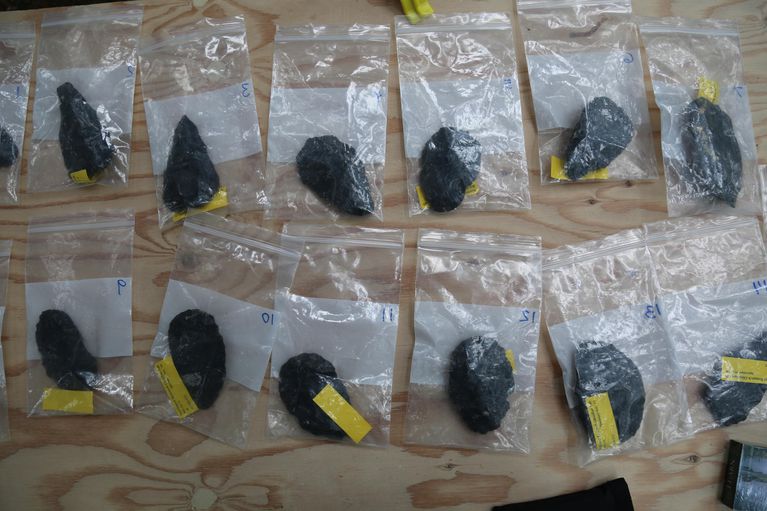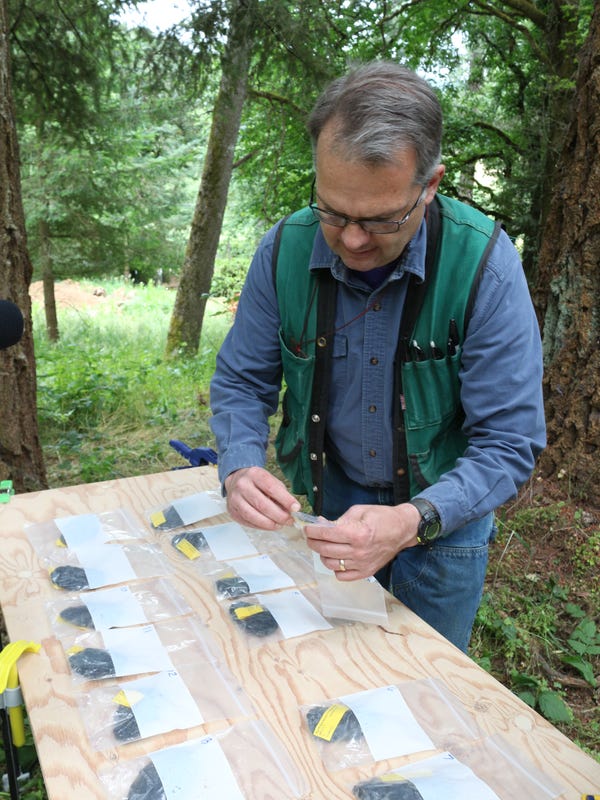Large discovery of Native American artifacts in Willamette Valley
Volunteer archaeologist Megan Wonderly discovers an obsidian Native American tool during the excavation. The tool, known as a biface, is an estimated 1,000 to 4,000 years old and could help researchers better understand early trade routes.

Thanks to a discovery by a local landowner, archaeologists unearthed the first recorded Native American tools of their kind in the Willamette Valley this summer.
While building a pond on his property, the landowner, who was not identified, found 15 obsidian hand axes. He reported his discovery to the Oregon State Historic Preservation Office, which led an archaeological dig at the site in June.

The tools, known as bifaces, are a rare find, said assistant state archaeologist John Pouley, who led the dig.
“Of approximately 35,000 recorded archaeological sites in Oregon, few, likely less than 25, consist of biface caches,” he said.
The tools are an estimated 1,000 to 4,000 years old. They were found on the traditional territory of the Santiam Band of the Kalapuya, which stretches between present-day Portland and Roseburg.
During the dig, archaeologists consulted the Confederated Tribes of the Grande Ronde, the Confederated Tribes of the Siletz and the Confederated Tribes of the Warm Springs Reservation.
With the assistance of the tribes, local universities and private archaeological firms, Pouley and his team determined that the unfinished tools were from the Obsidian Cliffs in the Central Oregon Cascades. They likely would have been used in trades before being worked into finished tools, Pouley said.
It’s unusual to find unfinished tools and the discovery will help archaeologists better understand prehistoric trade networks in the Pacific Northwest, Pouley said.
Pouley plans to write a report on the tools after the excavation is complete. He and his team will also present their findings at an anthropological conference in Spokane, Washington next year.
None of this would have been possible without the landowner, Pouley said.
“This site makes you wonder how many archaeological sites with the potential to shed light on the history of human occupation within Oregon have been found before, and never reported,” Pouley said. “We encourage anyone that finds artefacts on their property to contact us.”





